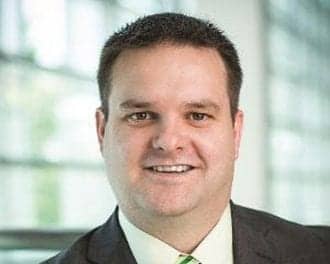Phonak, a global provider of hearing aids and wireless communications solutions, is sponsoring its first international conference dedicated entirely to the topic of unilateral hearing loss (UHL) among children, the company announced. The gathering takes place October 23 and 24 in Philadelphia, Penn, and brings together pediatric audiology experts, investigators, and clinicians for two days of presentations, discussions, and panels—including a special panel comprised of parents who will share their own experiences and personal journeys of having a child with UHL.
“This conference gathering will stimulate thoughtful interactions among attendees and speakers on a wide variety of topics related to UHL,” said Conference Chair Anne Marie Tharpe, PhD, professor and chair, Department of Hearing and Speech Sciences, School of Medicine at Vanderbilt University. “Topics include the latest implications of UHL, a review of technological management approaches, family-centered perspectives, and discussion on contemporary management strategies.”
It is estimated that up to 6.3 %1, or 4.4 million children2 , in the United States have UHL and research suggests that left untreated, UHL may present a much larger issue for school-aged children than simply not hearing well in one ear. Children with UHL may be 10 times more likely to repeat a year of school than kids with normal hearing3 and are five times more likely to need support services.4 One pilot study found that children with UHL perform significantly poorer on tests of working memory and phonological processing than their normal hearing peers.5
“UHL in children is truly an underserved topic for both hearing care professionals and parents,” said Angela Pelosi, global head of pediatrics for Phonak. “Professionals are always looking for more information on the topic so that they can better serve their pediatric patients. Meanwhile, parents and teachers should be equipped with the information they need to help convey exactly why it’s not in a child’s best interest to hear with just one ear.”
One of the outcomes of the conference includes a consensus paper for hearing care professionals. This will be prepared by a steering committee of experts in the field on a wide range of topics pertaining to UHL. Work will begin on the consensus paper immediately following the conference and is expected to be available by May 2018 according to Phonak. In addition to the most recent research, the latest treatment options for children with UHL will also be discussed, including Phonak Sky™, CROS II, and Roger™ Focus.
- Ross DS, Visser SN, Holstrum, WJ, Qin T, Kenneson A. Highly variable population-based prevalence rates of unilateral hearing loss after the application of common case definitions. Ear and Hearing. February 2010;31(1): 126-133. doi: 10.1097/AUD.0b013e3181bb69db
- Pop1 Child Population: Number of Children (in millions) Ages 0–17 in the United States by Age, 1950–2016 and Projected 2017–2050. ChildStats.gov Forum on Child and Family Statistics. https://www.childstats.gov/americaschildren/tables/pop1.asp Accessed October 23, 2017.
- Bess FH, Tharpe AM. Case history data on unilaterally hearing-impaired children. Ear and Hearing. February 1986; 7(1): 14-9.
- Oyler RF, Oyler AL, Matkin, ND. Unilateral hearing loss: demographics and educational impact. Language, Speech, and Hearing Services in Schools. April 1, 1988; 19: 201–210. doi:10.1044/0161-1461.1902.201
- Ead B, Hale S, DeAlwis D, Lieu, JEC. Pilot study of cognition in children with unilateral hearing loss. International Journal of Pediatric Otorhinolaryngology. November 2013; 77(11): 1856-1860. DOI: 10.1016/j.ijporl.2013.08.028
Source: Phonak





